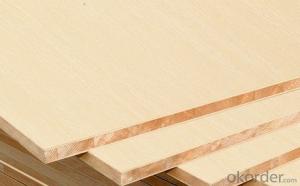Laminated Particle Board, or LPB for short, is a versatile and widely used material in the furniture and construction industry. It’s a type of engineered wood product that’s made from small wood chips or particles that are mixed with a resin and then pressed together under heat and pressure. The result is a strong, durable, and cost-effective material that’s perfect for a variety of applications.
But what exactly makes LPB so special? And why is it such a popular choice for so many people? Let’s dive in and explore the world of Laminated Particle Board and find out.
The Strength of Layers
One of the key features of LPB is its layered structure. The particles are arranged in layers, with each layer running perpendicular to the layer above and below it. This cross-grain arrangement gives LPB its strength and stability, making it resistant to warping and twisting. It’s this unique structure that sets LPB apart from other types of engineered wood products.
A Sustainable Choice
LPB is also an environmentally friendly option. Since it’s made from small wood chips and particles, it makes use of wood waste that would otherwise be discarded. This not only reduces waste but also helps to conserve natural resources. Plus, the manufacturing process for LPB is more energy-efficient than that of solid wood, making it a more sustainable choice for those who care about the environment.
Easy to Work With
Another advantage of LPB is its ease of use. It can be cut, drilled, and sanded just like solid wood, making it a popular choice for DIY enthusiasts and professionals alike. And because it’s made from small particles, it’s less likely to split or crack, which can be a common issue with solid wood.
Customizable and Cost-Effective
LPB is also highly customizable. It can be laminated with a variety of materials, such as wood veneer, melamine, or even plastic, to create a wide range of looks and styles. This makes it an ideal choice for those who want a specific aesthetic but don’t want to break the bank. Plus, LPB is generally less expensive than solid wood, making it a cost-effective option for many projects.
Durable and Long-Lasting
The durability of LPB is another reason why it’s so popular. It’s resistant to moisture, making it suitable for use in kitchens, bathrooms, and other areas where water exposure is common. And because it’s made from small particles, it’s less likely to be affected by changes in temperature and humidity, which can cause other types of wood to warp or crack.
Versatile Applications
LPB can be used for a wide range of applications, from furniture and cabinetry to flooring and wall paneling. Its versatility makes it a popular choice for both residential and commercial projects. Whether you’re building a new home or renovating an existing one, LPB is a material that can meet your needs.
The Downside of LPB
While LPB has many advantages, it’s not without its drawbacks. One of the main concerns with LPB is its susceptibility to formaldehyde, a chemical that’s used in the manufacturing process. Some people are sensitive to formaldehyde and may experience allergic reactions or other health issues as a result of exposure. However, there are low-emission LPB options available that can help to mitigate this concern.
Choosing the Right LPB for Your Project
When it comes to choosing the right LPB for your project, there are a few factors to consider. First, consider the intended use of the material. If it will be exposed to moisture, you’ll want to choose a product that’s resistant to water damage. Next, consider the look and style you’re going for. LPB can be laminated with a variety of materials, so choose a finish that matches your aesthetic. Finally, consider your budget. LPB is generally more affordable than solid wood, but prices can vary depending on the quality and type of LPB you choose.
Conclusion
In conclusion, Laminated Particle Board is a strong, durable, and cost-effective material that’s perfect for a variety of applications. Its layered structure gives it strength and stability, while its customizable nature makes it an ideal choice for those who want a specific look and feel. Plus, its sustainable and environmentally friendly manufacturing process makes it a responsible choice for those who care about the planet. So the next time you’re planning a project, consider LPB as a potential material. You might just be surprised at how well it meets your needs.

